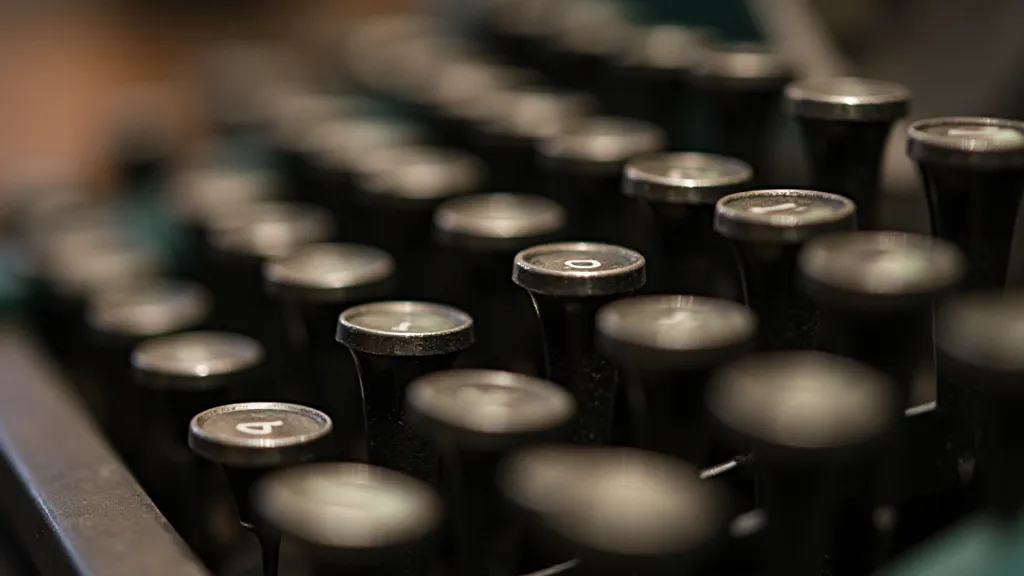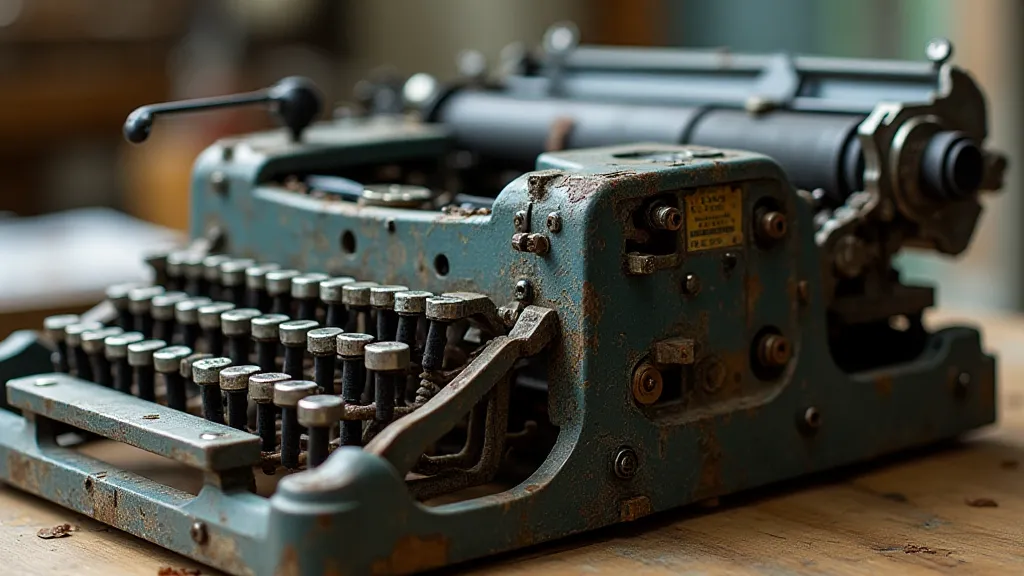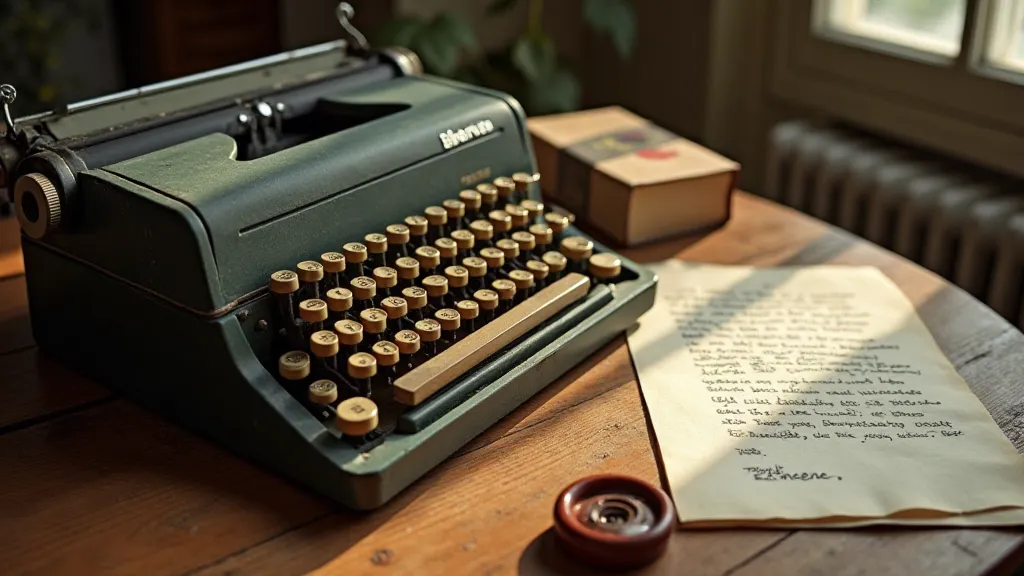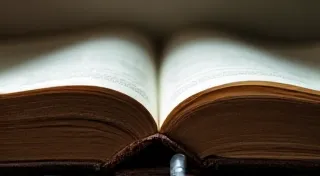Ephemeral Echoes: Font Matching Typewriter Models and the Archaeology of Letters
There’s a quiet beauty in the imperfection. A whisper of history clinging to the slightly uneven letterforms, the faint trace of ink dust, the subtle rhythmic clatter that defined an era. It’s a beauty that speaks of human hands, of deliberate action, of a time before digital precision homogenized our communication. That beauty is embodied in antique typewriters, and increasingly, in the painstaking process of recreating their unique fonts – a task we’ve poured our hearts and expertise into here at our digital typewriter font library.
My fascination began, predictably, with an old Underwood. My grandfather, a stoic man of few words, kept it in his workshop. It wasn’t a decorative piece; it was a working tool, used for composing letters, crafting simple poems, and occasionally, just for the satisfying click and whir of the mechanism. The letters he produced held a tangible weight – a physical connection to his thoughts and feelings that felt profoundly different from the sterile glow of a computer screen. That machine, and the imperfect beauty of the letters it produced, sparked a quest to understand – and to recreate – that specific typographic voice.
The Detective Work: Deconstructing a Typewriter's Signature
Recreating a typewriter font isn't simply a matter of scanning a few characters. It's an exercise in historical archaeology, a painstaking process of observation, measurement, and deduction. Each typewriter model – the Remington No. 3, the Olympia SM9, the IBM Selectric – possesses its own distinct typographic personality. It's not enough to notice that the ‘e’ has a particular curve; we must understand *why* that curve exists. Was it a deliberate design choice dictated by the manufacturing process? Was it a consequence of the alloys used? Or was it the result of subtle imperfections introduced during the die-casting process?
The process begins with high-resolution photography. We meticulously document the typeface, often using a macro lens and controlled lighting to capture the minutiae of each character. Kerning, leading, the subtle variations in stroke weight – everything is noted. Then comes the measurement phase. We use digital calipers and advanced imaging software to quantify the precise dimensions of each character, paying close attention to serifs, bowls, and stems. It’s surprisingly complex. A seemingly simple ‘a’ can exhibit subtle variations based on the machine's age, wear, and even the specific ribbon used.

The Human Element: Craftsmanship and Variation
What truly differentiates these typewriter fonts from more sterile, digitally-engineered typefaces is the acknowledgment of human error and variation. Typewriter typefaces weren't designed in a vacuum; they were the product of skilled metalworkers, often working with limited resources and facing the inevitable challenges of mass production. Slight inconsistencies in the dies used to cast the type characters resulted in subtle differences between individual characters, even within the same typeface. To simply erase these variations would be to strip the font of its character, its soul. The aesthetic of these historic typewriter models is something we deeply explore, and you can read more about the typographer's lens applied to this fascinating subject.
We consciously incorporate these imperfections into our digital reproductions. It’s not about replicating a ‘perfect’ version of a typewriter font; it’s about capturing the spirit of the original, the essence of its time. It’s about preserving the legacy of the artisans who created these machines and the writers who relied on them.
Beyond the Letters: Context and History
Understanding the historical context of a typewriter model is crucial to accurately recreating its font. The Remington No. 3, for example, debuted in the late 1800s, a time when typewriters were revolutionary communication tools, transforming businesses and impacting the very nature of literature. The Olympia SM9, a German design from the mid-20th century, reflected the post-war era’s emphasis on functionalism and efficiency. Each model tells a story, and that story is inextricably linked to its typeface.
Our research extends beyond the technical aspects of font creation. We delve into the history of the typewriter’s manufacturer, the materials used in its construction, and the cultural impact of its design. This broader understanding informs our approach to font recreation, ensuring that the final product is not just a visually accurate reproduction, but also a historically informed artifact.
The influence of the ribbon itself shouldn't be underestimated. The color, consistency, and even the ink composition could significantly impact the appearance of the printed characters. We’ve experimented with different ribbon simulations to better understand how these factors contributed to the overall aesthetic. The enduring power of typewriter fonts in modern writing is remarkable; for more insight, explore beyond novelty and discover how these relics continue to inspire.

The Voices Within: Exploring the Human Connection
These machines weren't merely tools; they were conduits for creativity, vessels for personal expression. Imagine the letters penned by soldiers on distant battlefields, the love letters exchanged between sweethearts, the novels painstakingly hammered out by aspiring authors. Each character carries a fragment of that history, a whisper of a life lived. The scribing soul of a typewriter is something we deeply appreciate – the scribing soul truly resonates within these machines and the stories they tell.
Preserving Authenticity: More Than Just Replication
Our process isn’t about achieving photographic fidelity. It’s about capturing the *feel* of a typewriter font, the sense of deliberate action, the subtle quirks that distinguish it from mass-produced digital type. We strive to recreate the imperfections, the unevenness, the faint traces of ink dust that lend these fonts their unique character.
The Digital Echo: Bringing History to the Screen
We’re keenly aware of the challenge: how to translate the tangible experience of a typewriter – the clatter of keys, the smell of ink, the physical weight of the machine – into a digital format. We believe that the key lies in preserving the imperfections, the subtle variations that make these fonts so distinctive.
A Legacy of Innovation: The Enduring Appeal of Typewriters
The rise of the typewriter marked a pivotal moment in human history, transforming communication, revolutionizing business, and inspiring countless works of art and literature. By recreating these fonts, we’re not just preserving a piece of typographic history; we’re celebrating an era of innovation, ingenuity, and creativity.
Even in our increasingly digital world, the allure of the typewriter endures. There’s something profoundly satisfying about the deliberate action of typing on a mechanical keyboard, the tangible connection between thought and expression. We believe that our typewriter fonts offer a way to recapture that feeling, to bring a touch of vintage charm to modern creative projects.

More Than Just Fonts: A Celebration of Craft and Legacy
Our collection isn’t just about providing digital fonts; it’s about preserving a vital piece of our technological and cultural heritage. These typewriters were more than just machines; they were tools of expression, instruments of creativity, and witnesses to history. By recreating their fonts, we’re not just reproducing letterforms; we’re keeping those stories alive. The ghost in the pixel remains strong, and the ghost in the pixel embodies the enduring power of these machines.
The rise of digital typography has, in some ways, homogenized the visual landscape. While digital fonts offer unparalleled flexibility and precision, they often lack the unique character and personality of their analog predecessors. Our goal is to bridge that gap, to offer a collection of typewriter fonts that capture the beauty and authenticity of the original machines, offering graphic designers and typography enthusiasts a fresh palette of retro resources.
We encourage collectors and enthusiasts to explore the world of antique typewriters. There's a profound satisfaction in holding a piece of history in your hands, in hearing the rhythmic clatter of the keys, and in appreciating the ingenuity and craftsmanship of a bygone era. And, of course, we hope our font reproductions provide a new way to connect with that legacy, allowing you to bring the spirit of the typewriter to your own creative projects.
The subtle nuances of a typeface, influenced by the materials used and the manufacturing processes of the time, contribute significantly to its unique personality. We strive to capture these subtleties, ensuring that our reproductions are not just visually accurate, but also historically informed. Beyond the technical aspects of font creation lies a deep appreciation for the human element, the skilled artisans who brought these machines to life.
The legacy of these machines extends far beyond the realm of typography. They represent a time when technology was more intimately connected to human creativity, when the tools of expression were tangible and visceral. We hope that our font reproductions serve as a reminder of that era, inspiring a renewed appreciation for the beauty and authenticity of analog craftsmanship.




